Developed on the eastern fringes of downtown Phoenix during the late 19th and early-20th centuries as a working-class streetcar suburb, Garfield is one of the city’s oldest neighborhoods and a preeminent architectural hodgepodge, with a wealth of humble bungalows, Period Revival homes, early ranch-style abodes, and pyramid cottages (somewhat of a local speciality) lining its streets. While eclectic in style, most of the residences are modestly sized in this colorful and close-knit residential district. A longtime stronghold for the city’s Mexican American community, in recent years Garfield has been attracting new arrivals—artists, young families, and college students—drawn to its historic character, gallery scene, and proximity to downtown.
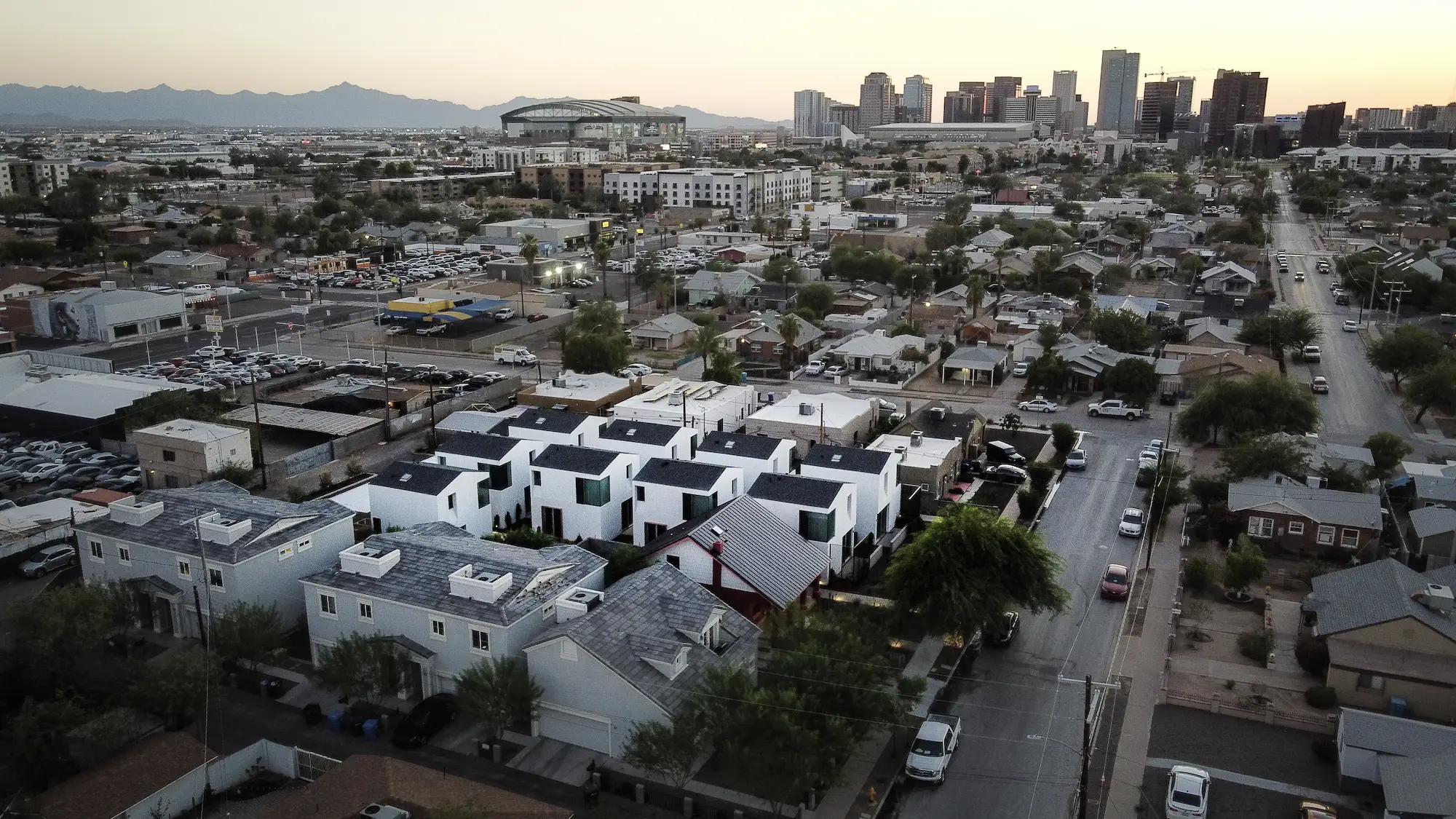
View of the low-slung, close-knit Garfield community with downtown Phoenix and Chase Field in the distance. Photo courtesy Stance Architecture
Located on the southern edge of Garfield’s designated historic district on East Polk Street, a new multifamily infill community designed by local studio Stance Architecture, embraces this eclecticism by blending old and new, densification and preservation. It not only resuscitates a 1930s Craftsman-style bungalow that had fallen into serious disrepair but adds nine newly constructed detached cottages—each measuring a compact 884 square feet—within the same 22,000-square-foot lot. Like other modes of missing middle housing, the project, dubbed Polk Bungalows, squeezes as many units as possible into a limited footprint while remaining at scale with the surrounding neighborhood and provided residents with a sense of autonomy.
The project, which was completed in February 2022, was conceived by local developer Ganesh in response to Arizona’s deepening housing shortage. While a dense development, it is careful not to mar the historic character of the surrounding neighborhood as some larger residential developments in the surrounding area, although well-intentioned, have.
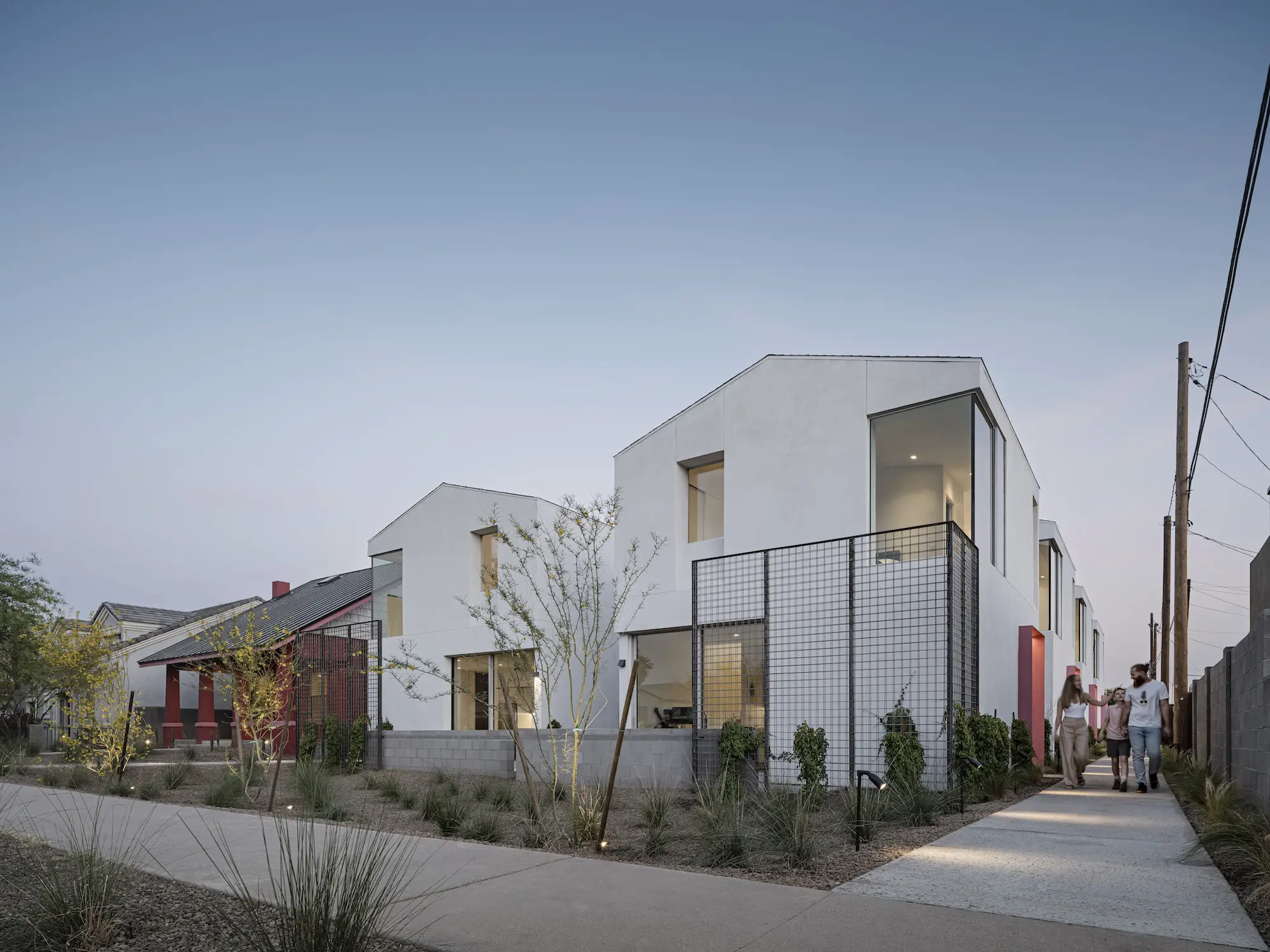
1
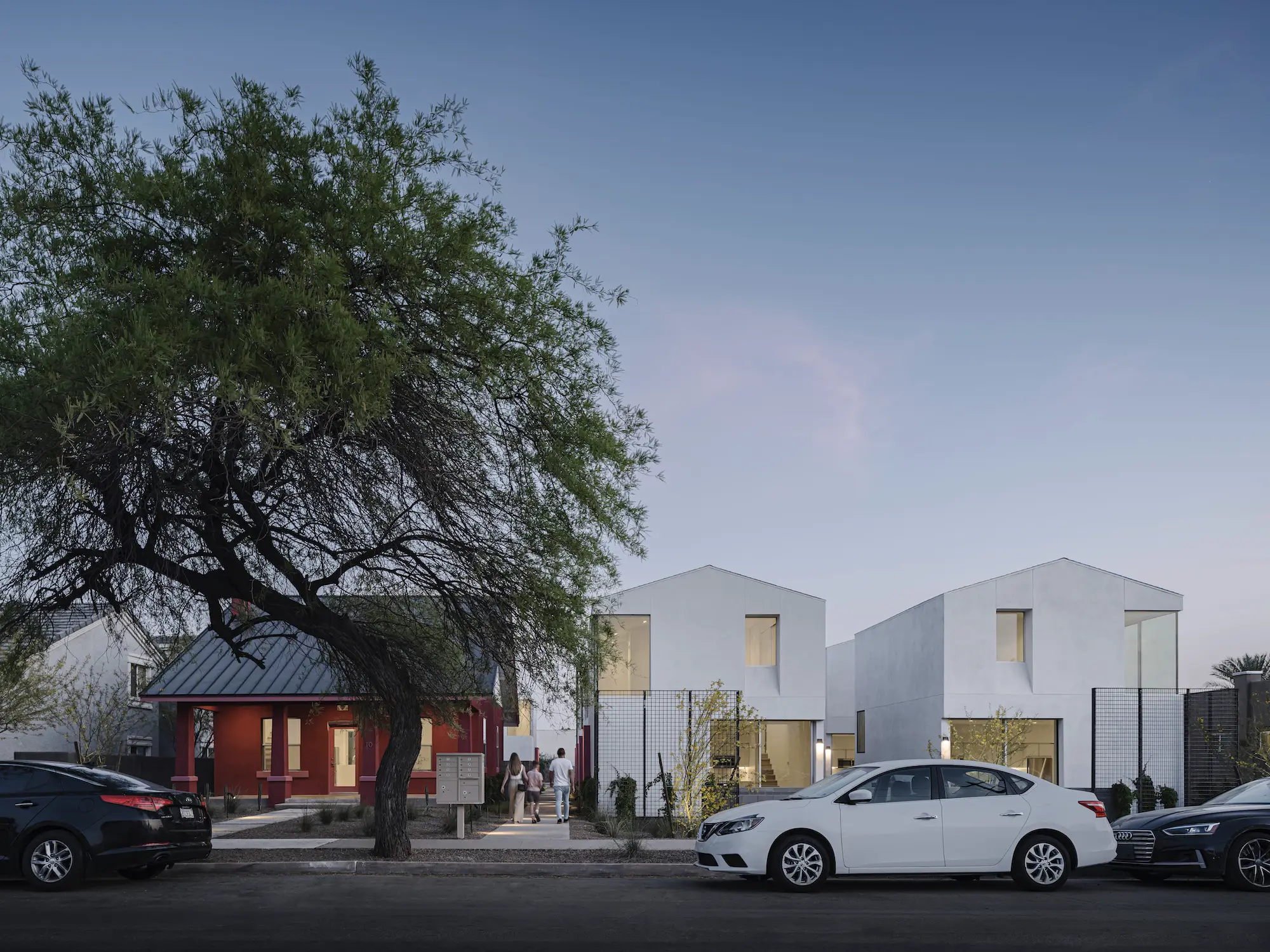
2
View of the restored historic house and bungalows looking southeast (1); evening elevation view from the street and the interior (2). Photos © Roehner + Ryan
Project architect Aaron Bass, firm principal, notes a general inclination toward the “hyper-dense” when developing multifamily projects in cities suffering acute housing shortages. “I think a lot of people are quick to say, ‘we’re going do the big block on top of a podium.’ But I think there’s a place in the middle where projects like Polk Bungalow can live,’ he says. “And I’m hopeful for it.”
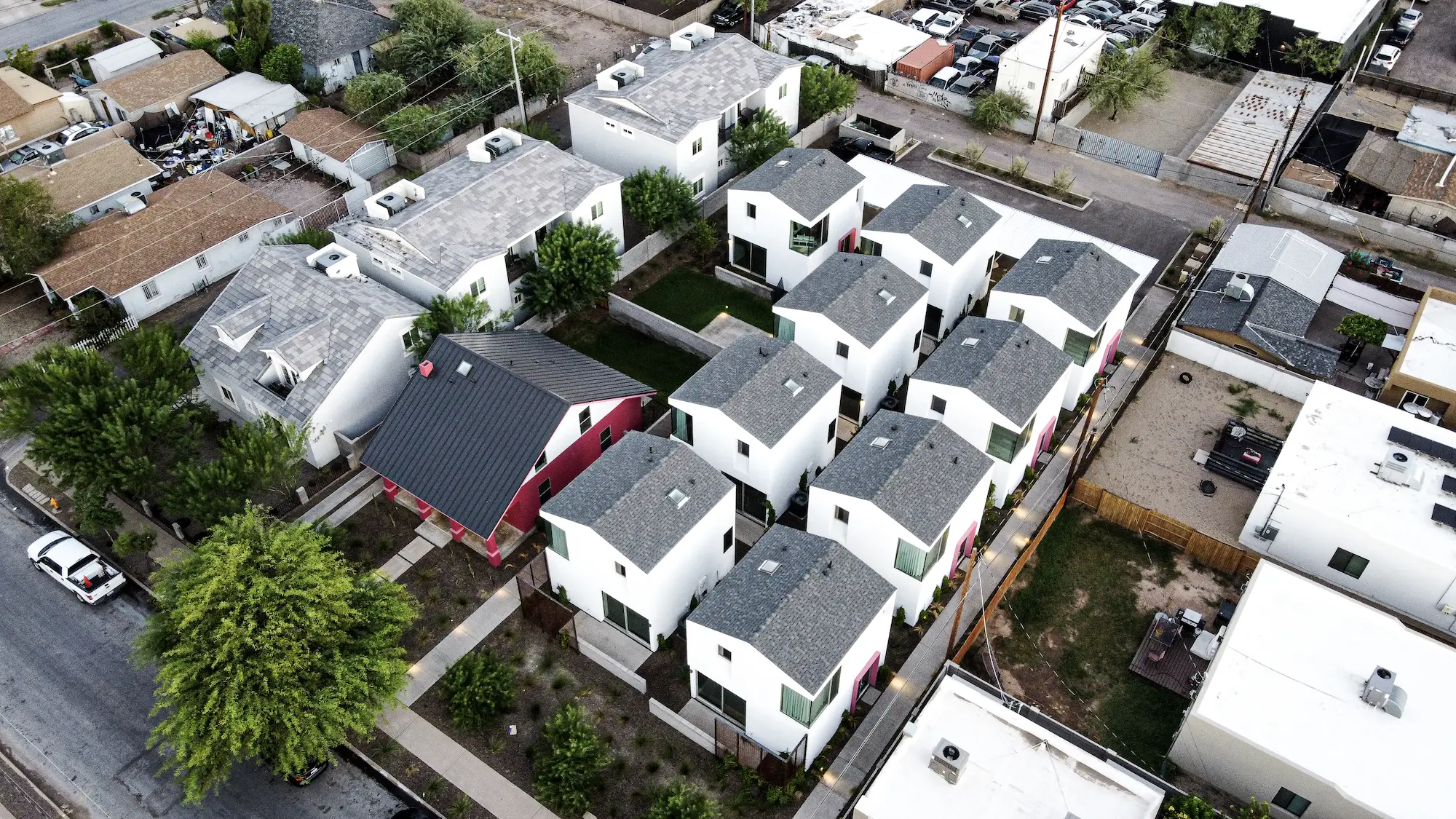
Aerial view of Polk Bungalows. Photo courtesy Stance Architecture
The resulting residential community—10 market-rate rental units in total—is a tidy, Monopoly-like assemblage of buildings. Prominently positioned along the street is the existing bungalow; following a gut rehab that entailed stripping multiple non-historic additions, the two-bedroom house now measures 1,380 square feet. Set back from the street and flanking the historic bungalow immediately to the west are three rows of the smaller “casita” bungalows—each row two-houses deep—with a final fourth row of three houses taking up the rear. These one-bedroom dwellings, with their living and sleeping areas split between two floors, reference the form of the neighboring 30s-era bungalow, their low-slung pitched rooflines meeting, not exceeding, the height of its historic counterpart. Landscaped outdoor corridors lace the redeveloped site, providing separation between the small houses and also integrating the development with the greater neighborhood.
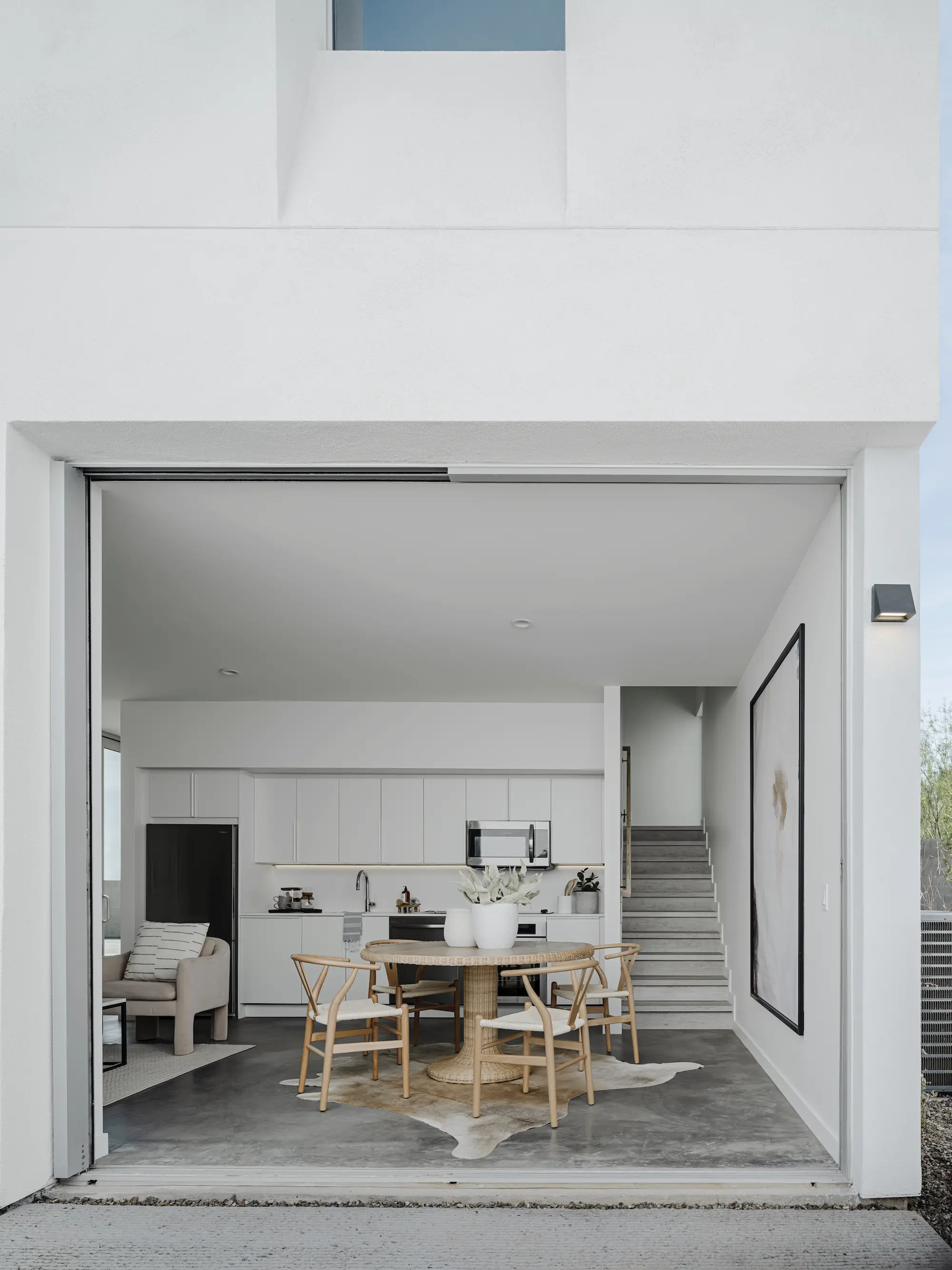
3
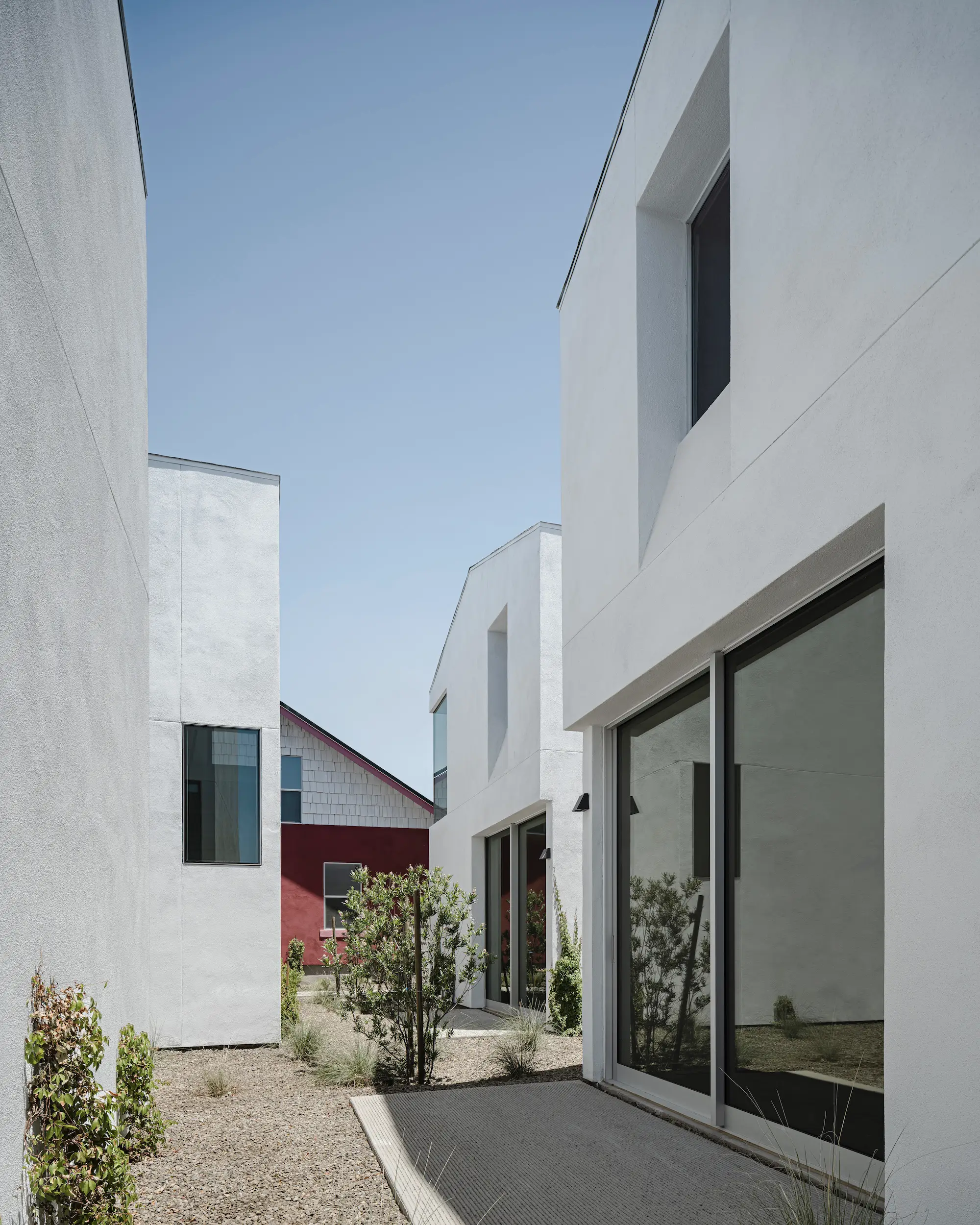
4
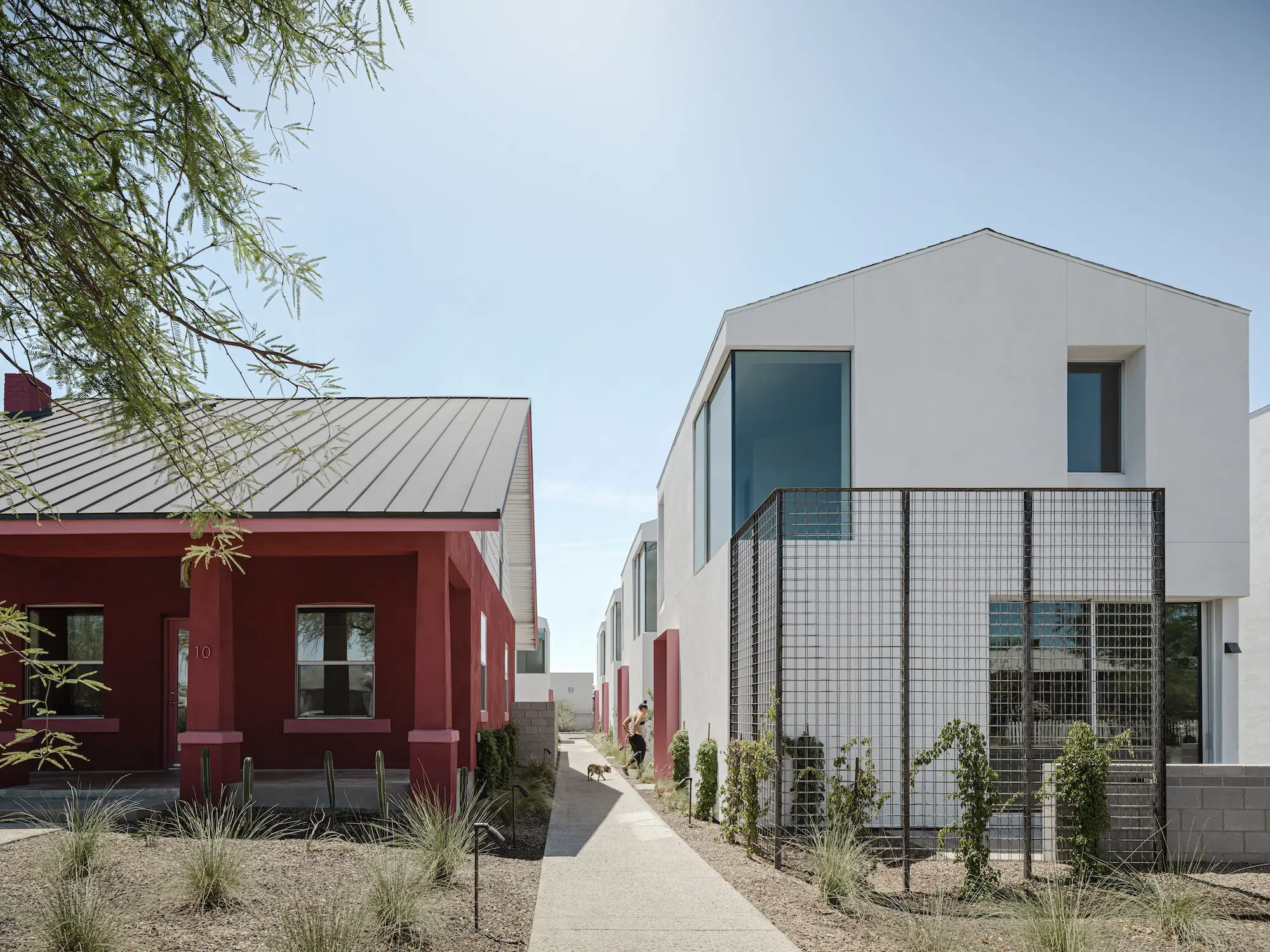
5
Interior view of a bungalow with patio slider doors fully open (3); view of bungalows, with the historic home in the background, as seen from a patio (4); looking south down a shared walkway that seperates the renovated 1930s bungalow from its smaller modern counterparts to the west (5). Photos © Roehner + Ryan
“We didn't think that the community would want to support a project that acted like a wall within its neighborhood,” says Bass. “Our approach was to make a little, tight-knit community within a historic district that has its own identity as well.”
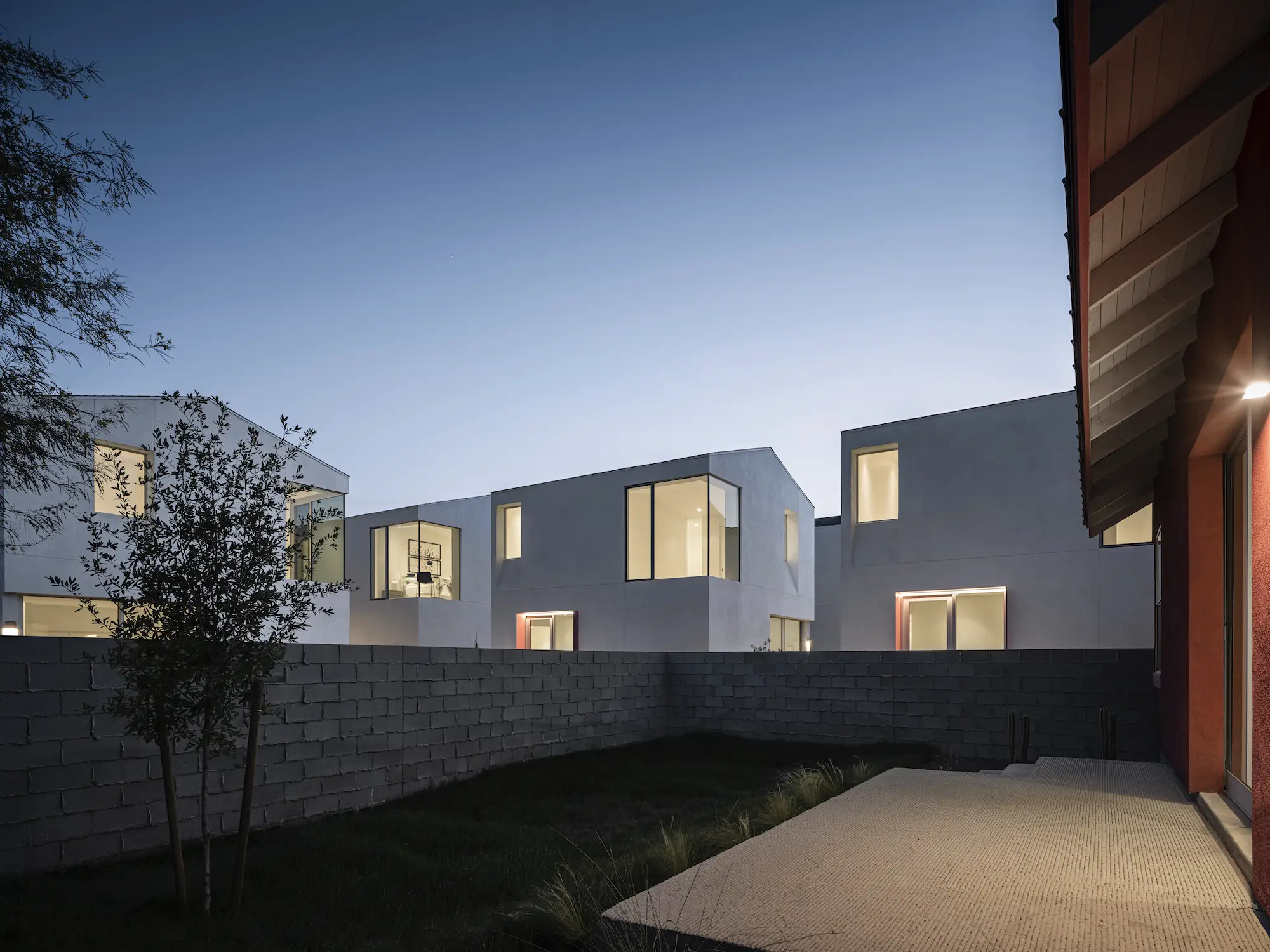
Evening view of modern bungalows from rear pation of historic bungalow. Photo © Roehner + Ryan
Like much of the housing stock in Garfield, a key element of the restored historic bungalow is its large front porch. (There's also a semi-private yard in the rear.) While the nine adjacent dwellings lack this signature feature, each includes a private patio space accessible through double-panel slider doors that flood the ground level—an open living and dining area with a kitchen—of the units with abundant daylight when opened. Full-height operable windows further provide a connection to the outdoors while providing natural ventilation. And while this fusion of indoor and outdoor spaces may seem difficult to pull off in such tightly packed conditions without sacrificing privacy, each structure is slightly offset so that residents don’t have front row views into each other’s homes.
“There is some privacy but there’s also no walls or gates—it's all about that connection, and the idea of taking the culture of a neighborhood and interweaving it throughout,” says Bass.
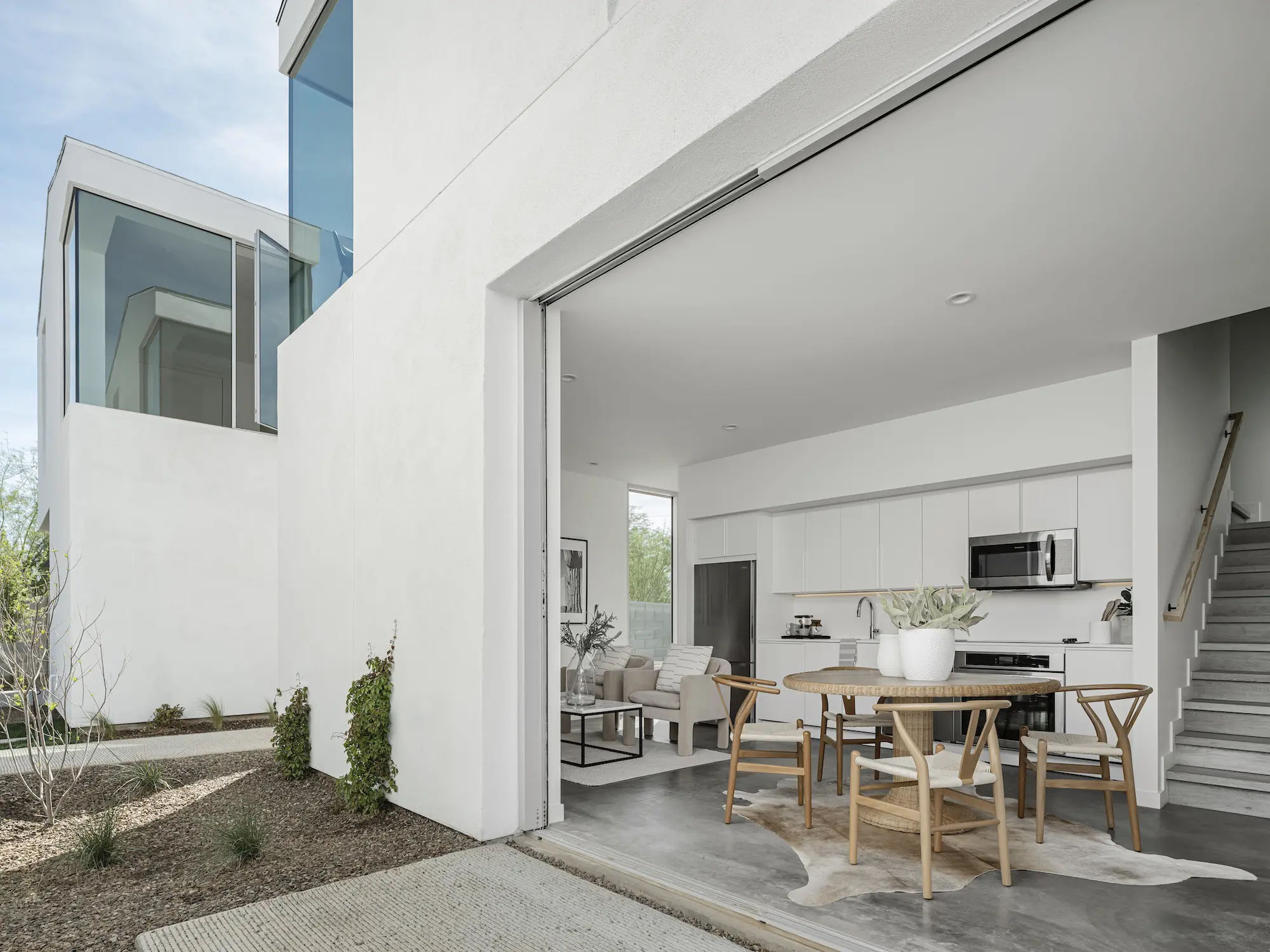
6
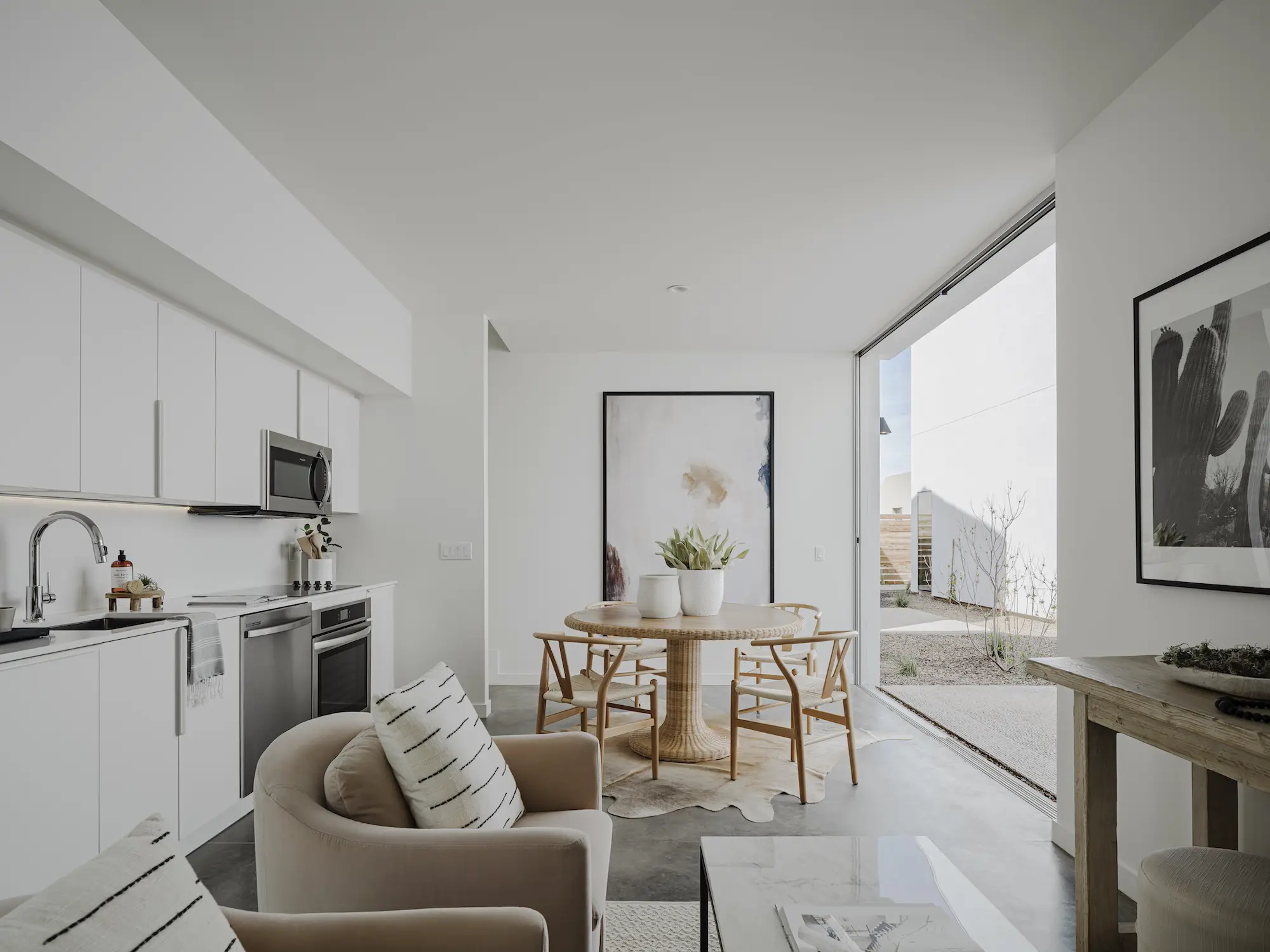
7
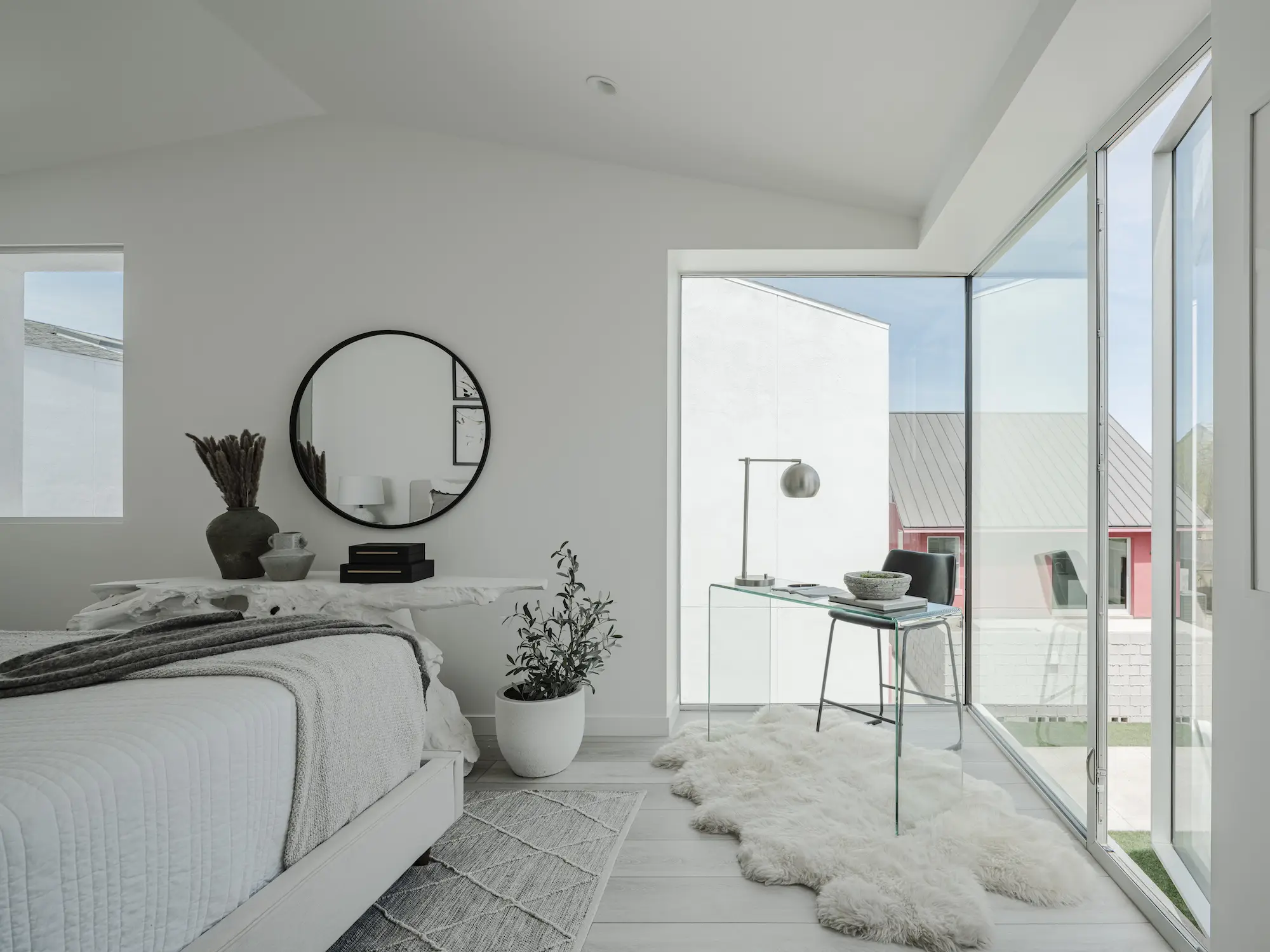
8
Living room space in modern bungalow as seen from patio (6); kitchen and dining area (7); second-floor bedroom with full-length windows open (8). Photos © Roehner + Ryan
All nine modern bungalows are painted white, save for a conspicuous splash of bright pink that frames the entrance to each unit. The restored bungalow, on the other hand, is all pink, treated to a fresh coat of paint during its extensive renovation.
“We pushed this sort of mural idea where there’s vibrant color everywhere on the historic house, and then brought one touch of color to each unit,” says Bass, who added that the bungalow at one point in its long and somewhat weird history—in addition to being a private residence, past uses include a neighborhood tavern and auto upholstery shop—was painted a “maroonish, pinkish hue.”
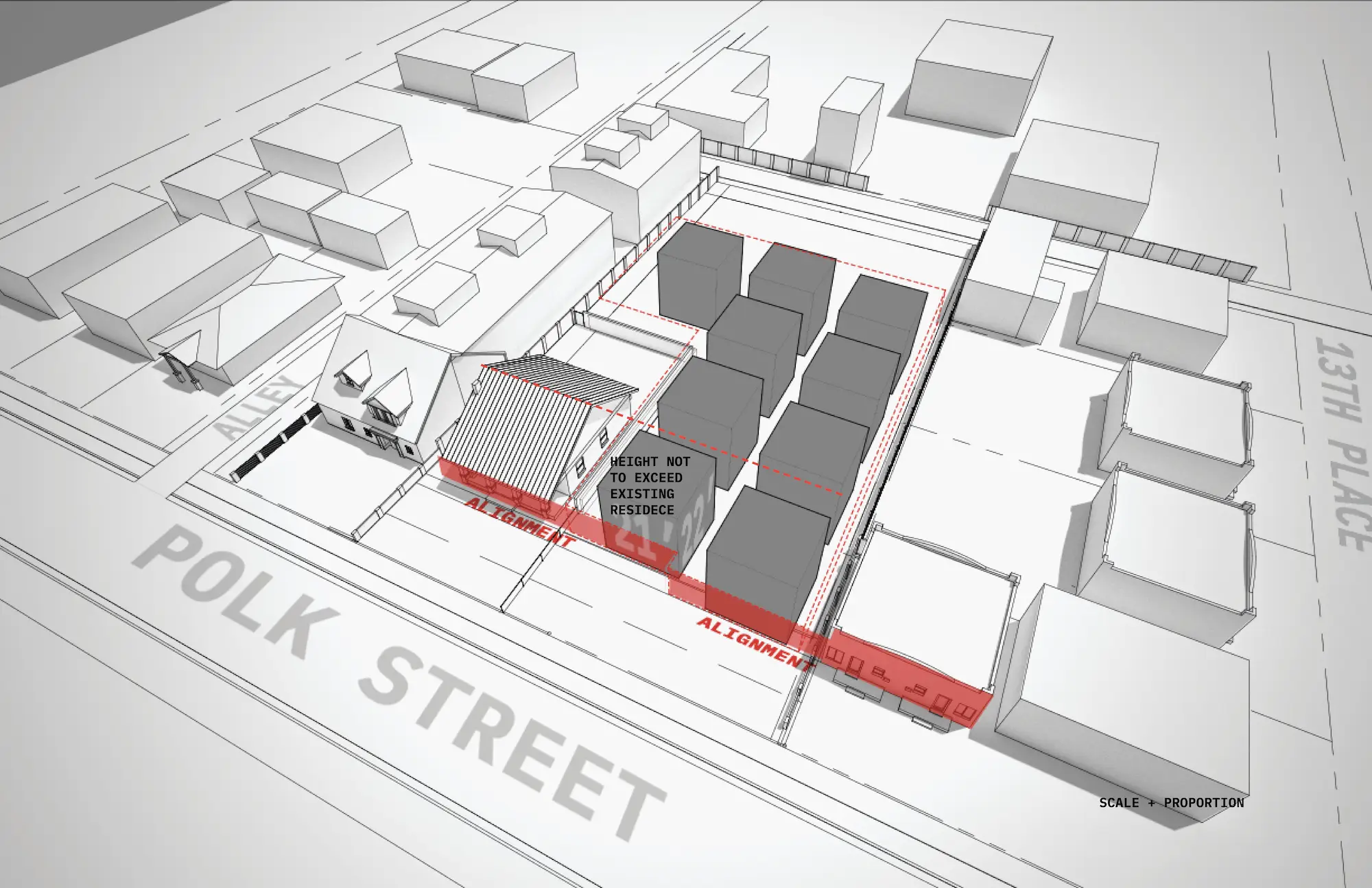
9
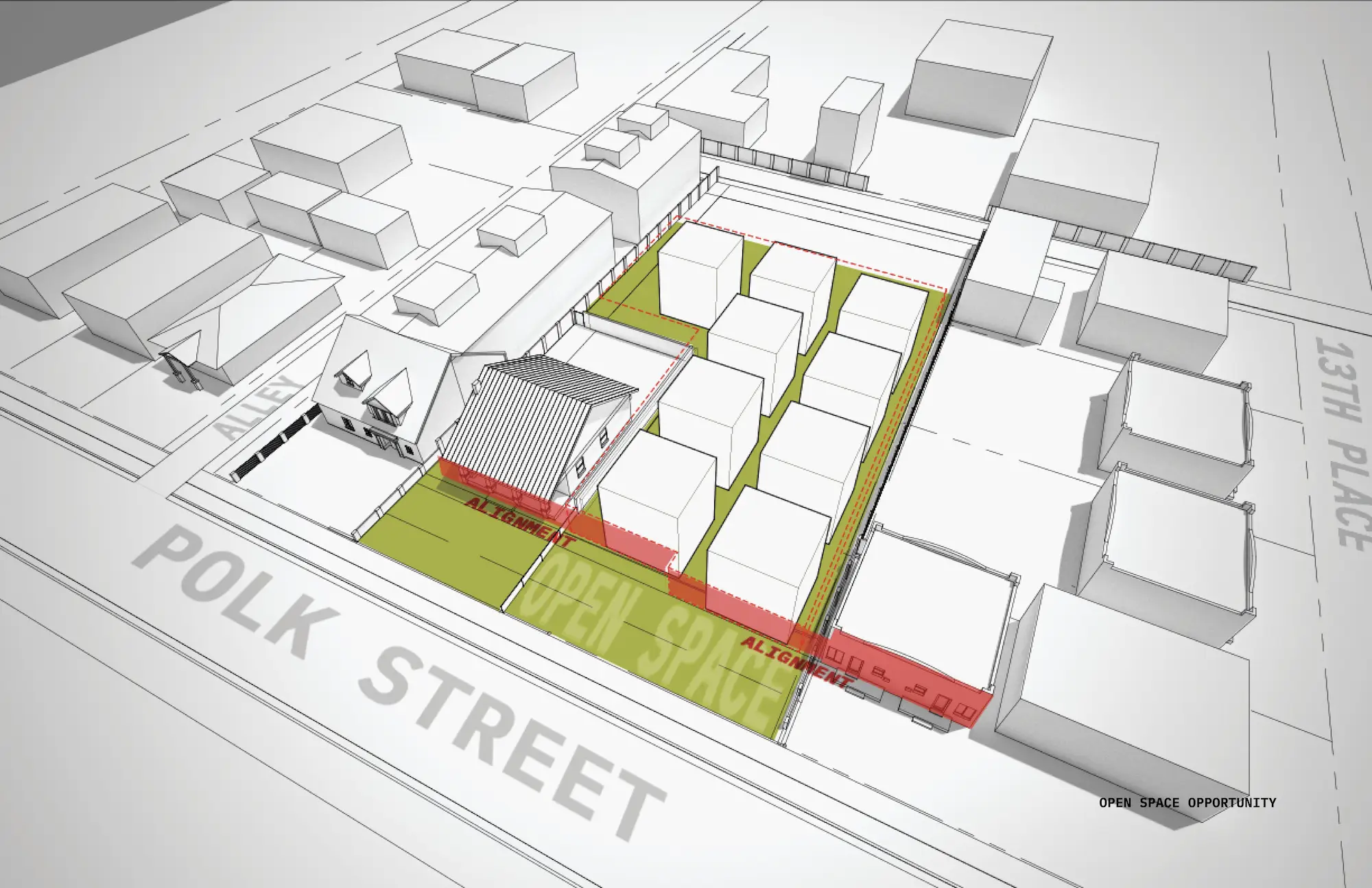
10
Site diagrams depicting scale and proportion of the development (9) and opportunties for shared and private open space (10). Images courtesy Stance Architecture
“With Garfield being so eclectic in nature and colorful and diverse, the community was okay with something modern,” Bass added, noting the extensive public engagement that took place before design plans were submitted to the city. “They also wanted us to keep the bungalow intact and give it a new presence, anchoring the project. This was important to them, and so it was important to us.”



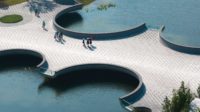
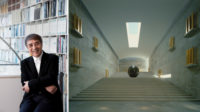



Post a comment to this article
Report Abusive Comment